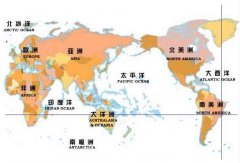How to produce coffee beans Coffee grinding which way is good
Mode of production
Ruwak coffee beans [the most famous coffee beans in history come from the remains of coffee beans in the feces of cats and muskcats after eating coffee beans]
Muscat Coffee (Kopi Luwak), Kopi (Indonesian, coffee), Luwak refers to an arboreal wild animal commonly known as "civet" by Indonesians, which looks similar to masked palm civet in southern China. It is found in Sumatra, Zawa, and Sulvis and is part of the 13677 islands of Indonesia. Luwak is an omnivore. They are eccentric, have a keen sense of smell, have thick hair and long tail, like to walk at night, and live in tropical rain forests, subtropical evergreen broad-leaved forests, mountain thickets or hills, mountains and grasses below 2000 meters above sea level. Their foods include small beasts, birds, amphibians and reptiles, crustaceans, fruits and seeds of insects and plants, and so on.
The Indonesian island of Sumatra produces excellent coffee beans, which were found in masked palm civet's feces in the bushes.
Lianhe Zaobao reported on the 6th that there is a coffee garden on a mountain 100 kilometers southeast of Medan City on Sumatra Island. Every morning, operators have to go to the coffee garden to look for masked palm civet's feces and pick out coffee beans. They think masked palm civet is a natural machine for removing the pulp of coffee.
Masked palm civet specializes in eating the most mature coffee fruit, where the enzymes in the body decompose the pulp of the coffee fruit and then discharge the coffee beans. Workers collect the coffee beans, wash their feces and make a drink that is irresistible to coffee lovers.
Makoni, an assistant professor in the Department of Food Science at the University of Guelph in Canada, explained that after coffee beans enter masked palm civet's digestive system, they break down proteins into small molecules of enzymes that interact with coffee beans. When coffee beans are roasted, these low molecular weight proteins react with carbohydrates or sugars of coffee beans, giving "Ruwak Coffee" the famous natural flavor of chocolate.

Important Notice :
前街咖啡 FrontStreet Coffee has moved to new addredd:
FrontStreet Coffee Address: 315,Donghua East Road,GuangZhou
Tel:020 38364473
- Prev

Differences in flavor with different roasting degrees self-baked black coffee
Raw coffee beans are actually tasteless and difficult to grind into powder, so you need to roast coffee beans in order to fully release their flavor. The purpose of roasting coffee is to heat the raw coffee beans to the desired maturity, and then make further adjustments to shallow or deep roasting according to the characteristics of the producing area of raw coffee beans or the designated requirements of customers.
- Next

Which coffee producing areas in Africa grow high quality coffee?
Africa 1. Ethiopia (for coffee: Mokhara, Yega) Ethiopia is the hometown of coffee in the hearts of countless people, and it is still the most important coffee producer in the world. Ethiopian coffee varieties taste wonderful, from floral and peach aromas to intoxicating flavors of sweet lemon, chocolate, Assam black tea and wild berries
Related
- Does Rose Summer choose Blue, Green or Red? Detailed explanation of Rose Summer Coffee plots and Classification in Panamanian Jade Manor
- What is the difference between the origin, producing area, processing plant, cooperative and manor of coffee beans?
- How fine does the espresso powder fit? how to grind the espresso?
- Sca coffee roasting degree color card coffee roasting degree 8 roasting color values what do you mean?
- The practice of lattes: how to make lattes at home
- Introduction to Indonesian Fine Coffee beans-- Java Coffee producing area of Indonesian Arabica Coffee
- How much will the flavor of light and medium roasted rose summer be expressed? What baking level is rose summer suitable for?
- Introduction to the characteristics of washing, sun-drying or wet-planing coffee commonly used in Mantenin, Indonesia
- Price characteristics of Arabica Coffee Bean Starbucks introduction to Manning Coffee Bean Taste producing area Variety Manor
- What is the authentic Yega flavor? What are the flavor characteristics of the really excellent Yejasuffi coffee beans?

